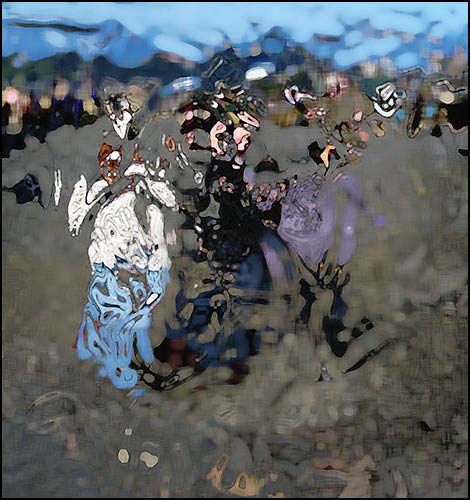
‘So, what is art supposed to look like?’ – 2008
“Without a structure, these oblique references suggest multiple scenarios. Almost anything is possible.”
Some of your pictures are plainly of people. Yet there is no empathy, the images say nothing about the persons concerned.
That’s right. These are not images made to dispense information, as conventional photography does. They are made to ask questions of the medium; not with the medium. To me the technology reveals its aspects best when examining the medium itself. What the original image was or who the figures were, are not primary concerns anymore. The actual process, the medium that caries the information, has become the prime subject.
It is helpful to think of them more as landscapes than figure studies.
These figure landscapes still seem to have a sense of occasion, a sense of something enfolding, however unclearly. You certainly don’t make it easy. Is this intentional?
Yes. Usually I try to avoid a storyline. Enfolding a narrative in a sequence is quite complex and doesn’t suit static imagery. What is more suitable for a motionless medium is presenting partials, small fragments and frozen situations, outside of time.
So in this picture, and all the others, the obvious elements of a plot like a beginning, middle and end have been removed. What is left is only the indirect evidence of an erased narrative. Without a structure, these oblique references suggest multiple scenarios. Almost anything is possible in scenarios without a narrative where the actual situation has become concealed.
How can you have a scenario without a narrative?
Storyboarding is a good example. I used to do a lot of these in my animation work. When all the key elements are drawn and in place the whole sequence tells the story. Now if you only keep one drawing and throw away the rest you are left with an image that was part of the scenario, it had a past and a future, but the storyline is now lost, erased. Perhaps that’s what I meant.